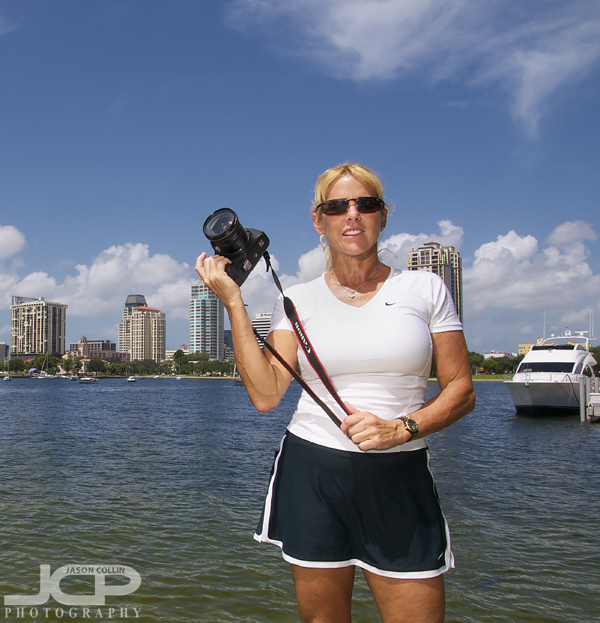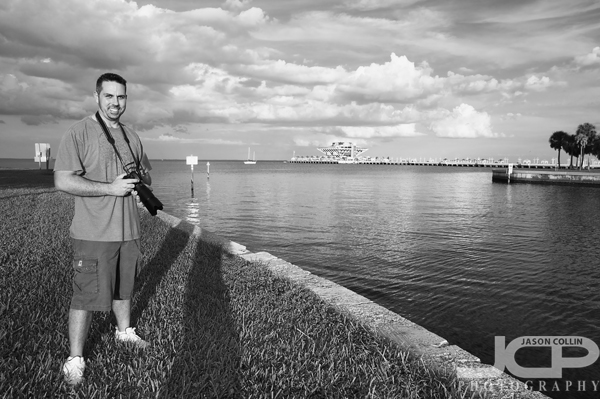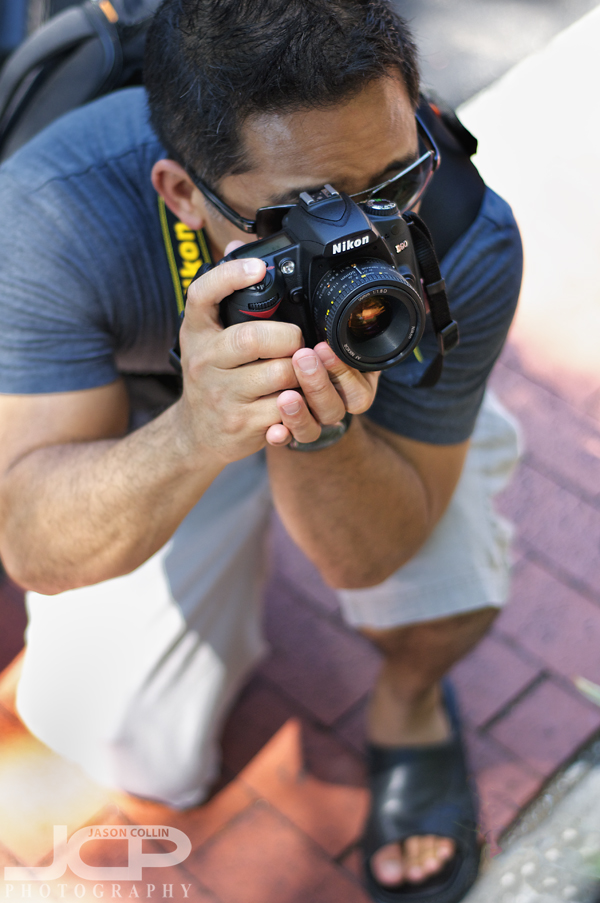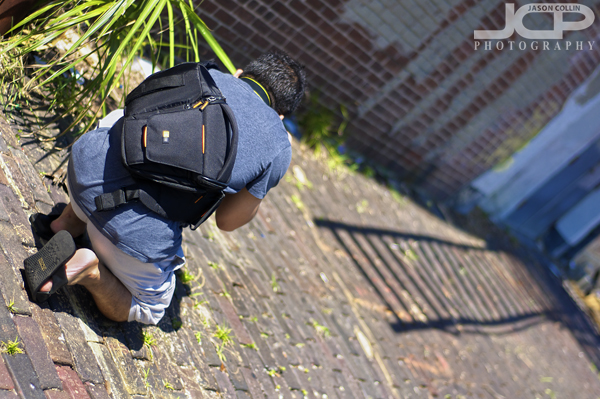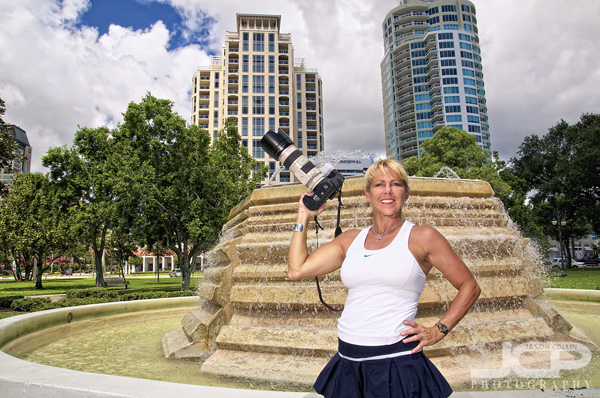 Deb wielding her substantial Canon 70-200mm f/2.8L IS lens - photo: Nikon D300 Tamron 17-50mm f/2.8 @ f/11 ISO 200 1/320th Strobist: Nikon SB-600 Speedlight held off camera triggered by commander mode
Deb wielding her substantial Canon 70-200mm f/2.8L IS lens - photo: Nikon D300 Tamron 17-50mm f/2.8 @ f/11 ISO 200 1/320th Strobist: Nikon SB-600 Speedlight held off camera triggered by commander mode
Once again my week started off with a fun DSLR Photography Lesson with Deb (lesson #1) in downtown St. Petersburg. In the past week she got some new photography gear in the form of a Canon 430EX II Speedlite, which I suggested to her during our first lesson as the best piece of gear to get next, as speedlights are extremely useful. She even got a bounce cap too, also very useful.
We started out shooting in the shade of one of the downtown condo towers to escape the heat and also because shade is better for making portraits. The first flash shots we took were practicing bouncing the flash off of available walls. Ideally there would be a nice, smooth white wall everywhere you happened to decide to make a portrait, however, one often has to make due with much less. Still, in a few quick test shots I was able to demonstrate to Deb that even bouncing the light from her 430EX II off a rough, dark creme wall was better than pointing the light straight at me. She was able to do this because the 430EX II has a swivel head allowing her to point the light of the flash in a different direction than her lens. On camera flash does not allow one to do this. Hence, an external flash, even used on camera, has a great advantage over the built-in pop-up flash.
Sometimes there are not any walls around so we even practiced for that before finishing with making a portrait in direct sunlight, perhaps the least ideal situation. However, using my tried and true settings (see photo description) serviceable broad daylight portraits are possible, when necessary.
Next lesson we will be getting the flash off of Deb's 7D and out on its own for off camera flash to produce even better portrait results. Deb is learning fast!



